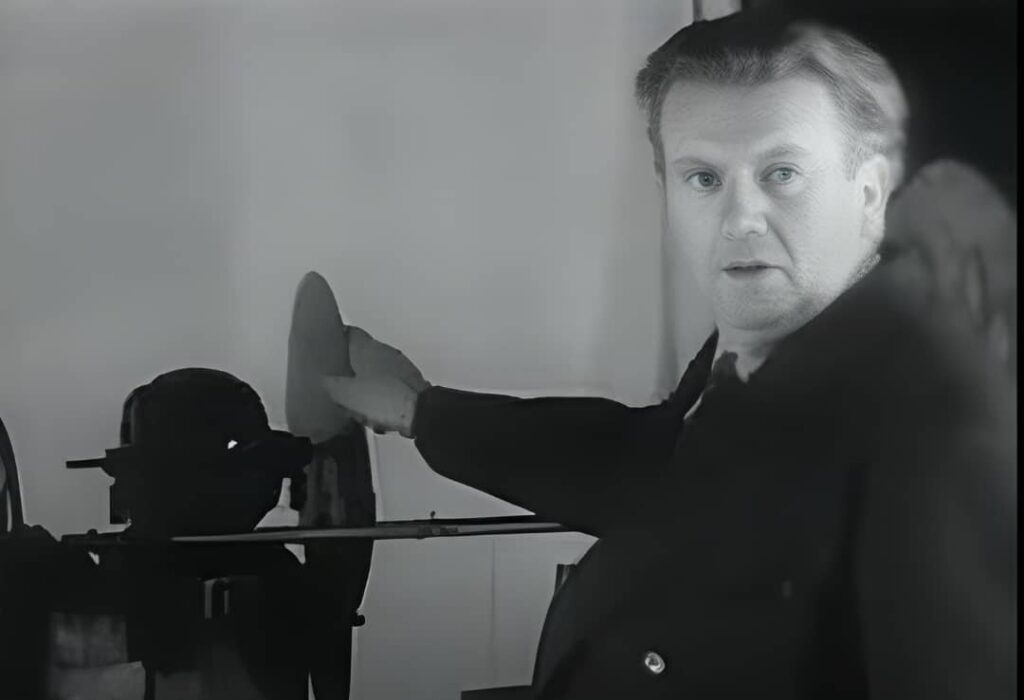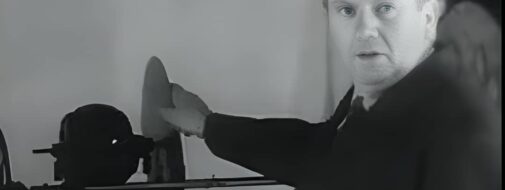JOHN LOGIE BAIRD INVENTOR – TOP POWERFUL FACTS ABOUT JOHN LOGIE BAIRD

JOHN LOGIE BAIRD INVENTOR
John Logie Baird FRSE was a Scottish engineer who is widely recognized as “The Father of Television.” He founded the television industry. An innovator, he was responsible for the creation of the first practical mechanical television, the first color television system that was publicly displayed, and the first color television image tube that was fully electronic.
He had an aptitude for electronics at a relatively young age; he had experimented with and tested remote-controlled photography, and he had also constructed a telephone exchange in order to connect his home to the homes of his friends who lived in the neighboring area. When he was in his teens, he learned about the concept of television from a German book that he had read about the photoelectric capabilities of selenium.
Due to the fact that he was aware of Arthur Korn’s remarkable accomplishment, this goal became a possibility. Baird attempted to apply the notion to live or moving pictures on the basis of Korn’s successful invention of a circuit that could transfer fax photographs over any distance that was required. Through the use of a telephone line, Baird was able to successfully complete the transmission of a long-distance television signal that was 438 miles in length from London to Glasgow.
Through his Baird Television Development Company Ltd., he exhibited the first transatlantic transmission, as well as the first stereoscopic television and video recording technology. Soon after, he accomplished more. Fibre optics, radio imaging, secret communication, and infrared scanning are just some of the other areas in which he made significant contributions, in addition to television.
The Early Life of John Logie Baird
- Birth and Childhood
John Logie Baird was born on August 13, 1888, in Helensburgh, which is located in the county of Dunbarton in Scotland. John Logie Baird was the youngest of four children, and he was born to Reverend John Baird and Jessie Morrison Inglis. He was born into a time and place that was chaotic, especially considering the circumstances of his birth. During the late nineteenth century, Scotland was beginning to create a national identity and was embracing liberalism and labor reform.
As a result of Great Britain’s efforts to promote English culture and identity at the same time, the people of Scotland felt compelled to recognize the significance and relevance of Scotland. Because of his numerous contributions to the field of telecommunications, Baird received widespread notice on a national scale. Baird had already begun to perform experiments and construct inventions by the time he was in his early teens, and he had already acquired a passion for electricity. Resourcefulness and ingenuity were hallmarks of Baird’s youth throughout his life.
At Larchfield Academy, he received his formal education; yet, a significant portion of his knowledge was acquired as a result of his innate curiosity. He educated himself on the subject of electronics in order to learn how to construct a system that would allow him to establish functional telephone connections between his home and the houses of his acquaintances. His interest in the potential of television was sparked by a book that he read when he was fifteen years old. Since then, he has committed his entire life to exploring the breadth of those potentials.
Baird attended the Royal Technical College in Glasgow to further his education in electrical engineering after finishing his elementary schooling. The outbreak of World War I, on the other hand, caused his studies to be discontinued, despite the fact that he was not accepted into the military due to health concerns. He moved to Trinidad and Tobago, where he temporarily ran a jam factory, after being left to pursue his interests in England. He worked for a utility firm and launched a manufacturing business before going to Trinidad and Tobago.
JOHN LOGIE BAIRD INVENTOR – Early History of Television
The guy who was responsible for turning television from a hazy concept into a concrete reality was John Logie Baird. It was not he who came up with the idea. The concept had been in existence for a considerable amount of time. In 1839, just after the discovery of the photoelectric effect, it was observed that the electrical resistance of selenium, which is a chemical relative of sulfur, varied as the intensity of the light falling on it changed. This was the first time that the possibility was understood. Electrical fluctuations might be converted into light fluctuations, and the same could be said for light fluctuations.
The transmission of photos may have been made possible by anything of this type. Baird’s apparatus was the first one to truly operate, and it was largely his excitement that created a television broadcasting system. Although there were several would-be innovators who produced and developed pieces of apparatus, Baird’s apparatus was the first one to actually work.
JOHN LOGIE BAIRD INVENTOR – Professional Career
Throughout the majority of his life, Baird struggled with his health and was never particularly robust. When he was attending Glasgow University to study electrical engineering, he was the first person to get interested in the issue of television. In the immediate aftermath of receiving his degree, he decided to abandon his engineering job in order to embark on a commercial career in London. Unfortunately, he was compelled to abandon his endeavors due to the deterioration of his health.
As a result, Baird, who was 34 years old at the time, traveled to Hastings in the hope that the absence of stress would rejuvenate his own health. As soon as he noticed that he had nothing to do, he began to develop and construct a device that could send and receive moving photographs. He rapidly felt bored with this situation. Three years later, with the help of a device that was constructed out of discarded biscuit tins, a hat box, darning needles, bicycle lamp lenses, and electric motors that had seen better days, the idea was successful. There is no doubt that it was successful despite the fact that it was fashioned out of pieces of old garbage.
After a protracted period of not earning any money, Baird was in a state of complete destitution at this point in time. He was overjoyed to receive a payment of twenty-five pounds a week for a period of three weeks in exchange for showing his television in a large London store. It was feasible to recognize the faces that were being televised despite the fact that the image that was received was just 1.5 inches by 2 inches and had a very flickering display.
The notoriety that he received allowed him to generate a small amount of money, which he used to finance additional research. Through the use of telephone wires, he transmitted photographs from London to Glasgow in the year 1927.
The year after that, he sent pictures from London to New York without making use of any wires of any kind. Using infrared rays, scenes were broadcast on television while it was dark outside. In addition to this, Baird produced a straightforward color television, experimented with stereoscopic television, and developed a system that could store images on wax. Beginning in 1930, the Baird Televisor was the first receiver to be made available to the general public. The Baird Television Company was the first company to provide a regular television service.
Despite the undeniable brilliance of Baird, none of his innovations are now being utilized in the modern world. It didn’t take long for his ideas to become obsolete, and they were rapidly replaced by more superior ones. It was his scanning technology that ultimately led to his downfall. He insisted on employing a mechanized system in order to conduct the scene investigation.
In order to create the effect of an eye moving quickly over a page, he mounted a succession of lenses, radiating slits, and spiral slits in spinning disks. This allowed him to create the illusion of an eye moving quickly from one place to the next. The electronic scanner was the method of choice for his competitors.
In the end, the British Broadcasting Corporation decided to reject the mechanical system because it produced images that were more prone to flickering. Both systems were put through a period of trial by the organization.
- Later Years
Even though Baird’s electrical color television and three-dimensional television were never replicated outside of his laboratory, he maintained his experiments throughout the rest of his life.
- Awards and Recognitions
A posthumous recognition of persons who were not awarded Honorary Membership during their lifetimes but whose accomplishments would have been sufficient to deserve such an honor was bestowed upon him by the Society of Motion Picture and Television Engineers (SMPTE) in 2014.
In his honor, the Logie Awards, which are shown on Australian television, were named.
John Logie Baird’s Personal Life
The marriage between Baird, who was 43 years old at the time, and Margaret Albu took place in 1931. The couple went on to have two children: Diana and Malcolm.
Baird went away on June 14, 1946, at the age of 57, shortly after suffering a stroke in February 1946 in the town of Bexhill-on-Sea, which is located in England.
YOU CAN ALSO READ ON:
